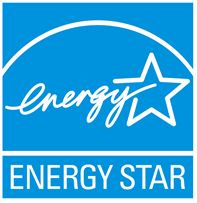
The Energy Star program is administered by the U.S. Environmental Protection Agency to test and certify products for energy efficiency and low greenhouse emissions. The program began in 1992 solely to evaluate the efficiency of what were then newfangled devices just coming to the consumer market: home computers. Today, you see the Energy Star label applied to a wide range of products from big central air conditioners down to small household electronics.
Goals of the program are twofold. First, to reduce the amount of greenhouse gases and other pollutants related to use of energy inefficient devices. Second, to establish a uniform program for laboratory testing and certifying the energy efficiency of products. The following principles are the program’s main guidelines:
- The product categories must have an extensive market in order to make a significant impact on nationwide energy savings.
- In addition to achieving high energy-efficiency standards, products certified with the Energy Star label must also offer features and performance that meet current expectations of consumers.
- Where a certified product carries a higher upfront purchase cost, it must provide sufficient energy savings to recoup that investment through lower operating costs in a reasonable time frame.
- Energy efficiency and performance must be evaluated and verified with standardized testing.
- Specifications to earn certification are regularly reviewed and revised as technology provides greater efficiency and performance.
Energy Star gas furnaces have AFUE (Annual Fuel Utilization Efficiency) ratings of 90 percent or better. Technology incorporated in these units typically includes two-stage burners, a primary and secondary heat exchanger to capture additional heat from exhaust gases and a variable speed blower.
Central air conditioners that meet qualifications are at least 15 percent more energy-efficient than standard efficiency models. Other standout features include a thermal expansion valve to meter refrigerant flow according to cooling load, a programmable variable speed blower with high-efficiency electronically commutated motor (ECM) and fan-only mode to circulate air on cool nights without running the compressor.
For more information about Energy Star furnaces and air conditioners, ask the professionals at Jackson & Sons.
Our goal is to help educate our customers in Eastern North Carolina (including Wayne, Johnston, Greene, Lenoir, Pitt and Duplin Counties) about energy and home comfort issues (specific to HVAC systems).
Credit/Copyright Attribution: “PublicDomain/Wikipedia”

